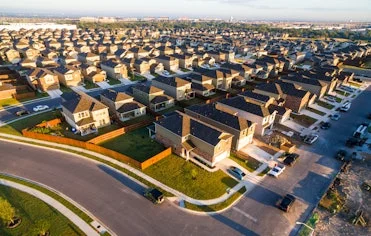
Why Is California’s Housing Strategy Falling Behind Other States?
As California grapples with its persistent housing crisis, a new study sheds light on how other states are implementing more effective housing strategies. The research highlights significant disparities in approaches, suggesting that California might benefit from revisiting its policies to foster better housing solutions. This issue is not just a matter of economics but resonates deeply with the daily lives of millions of residents impacted by rising costs and limited availability.
The report reveals that states like Texas and Florida have adopted more flexible regulations and streamlined permitting processes, translating into faster construction times and lower overall costs. "If we look closely at the mechanisms in place, it's clear that adaptability is key," stated housing expert Dr. Emily Carter.
One of the standout elements of these states' housing strategies is their focus on mixed-use development, which promotes diverse neighborhoods. This approach not only meets housing needs but also fosters community engagement and economic growth. As California continues to struggle under an overwhelming demand for affordable housing, examining these successful models may provide crucial insights.
Several key details from the research illustrate why California is lagging behind. Historically, the state has been encumbered by stringent zoning regulations and a complex bureaucratic structure that often delays projects for years. According to the study, these procedural obstacles are a stark contrast to the more straightforward strategies used by other states that prioritize expeditious development.
Moreover, the report emphasizes the importance of incorporating public feedback into housing initiatives. States that have engaged their communities in the planning process report higher rates of satisfaction and support for new development. Southern California's recent proposals, often met with public resistance, demonstrate a critical failure to involve residents substantively in decision-making processes.
Amid these findings, one cannot help but wonder what the future holds for housing policies in California. As the state faces mounting pressure to alleviate its housing crisis, will policymakers be willing to adopt these new paradigms? The challenge remains significant, but with such illuminating data now available, the possibility for reform exists.
In conclusion, as the narrative around California's housing crisis continues to unfold, this study invites further reflection and dialogue about the lessons to be learned from other states. Could a shift toward a more adaptive, community-focused approach signal a turning point for Californians seeking affordable homes? Your thoughts and opinions are vital; let's engage in a conversation about the future of housing in our state. What strategies do you believe could work best for California?
Latest
Is Southern California’s Job Market at a Crossroads?
15 hours agoCould a Trip to the Grocery Store Change Your Life?
15 hours agoCan you Like
Recent polling data from California has sparked conversations around a growing disconnect between Democratic political elites and the electorate in the state, raising questions about the future of Dem...
The California housing market, once a symbol of soaring prices and fierce competition, is showing signs of fatigue. As home costs, especially in Southern California, barely budged last month, many are...
As millions of Californians depend on Social Security for their financial well-being, reports of service disruptions have raised alarm bells. In response, California Attorney General Rob Bonta has int...